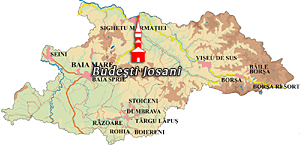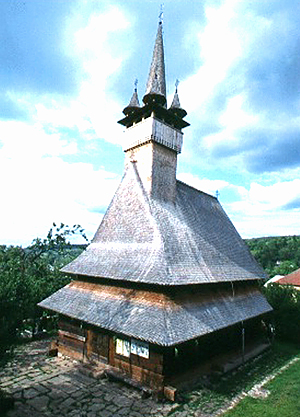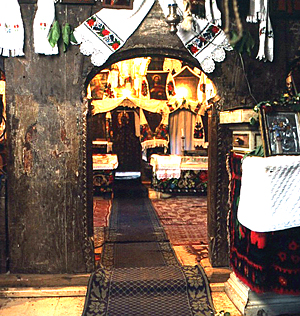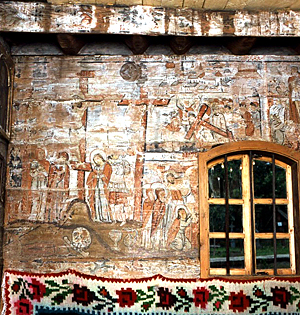Budesti Josani Church

Year built: 1643
Location: Budeşti is situated in the valley of the Cosãu River, 25 km south of Sighetu Marmaţiei, following DN 18 for 12 km and then DJ 109 F.
Summary: The church is famous for objects that belonged to two 18th century freedom fighters against the Austrian Habsburgs: the coat of mail of Pintea the Brave, and the flag of Ferenc II Rákóczi, a Transylvanian nobleman. There are also 15th-17th century icons painted on wood and glass. It is one of the eight churches on the UNESCO World Heritage List.

Budeşti is one of those bigger communities with two churches and two distinct parishes. Here the difference between the lower and upper halves of the village is made with the words Josani and Susani. This separation is not administrative, but used by the local people. The name Budeşti means “The kin of Bud”, a person mentioned in a document of Louis the Great in 1361. This is the first mention of the village, followed by a whole series of other documents all through the Middle Ages.
The church in Budeşti Josani is dedicated to St. Nicoară, which is the old Romanian version of the name Nicholas. It is one of the churches that have served as a parish church without a break and are still used as one.
The church of St. Nicoară is a good example of the typical Maramureş church, as it still preserves its original shape, while the dimensions are slightly larger than usual (18m x 8m). But, it is the only one in the historical Country of Maramureş to display the four small corner pinnacles at the base of the tower roof that are the typical element of the churches of the Country of Lăpuş.

The interior has not been changed much, but in 1922, as in so many other churches, some modifications were made that affected the wall paintings. Openings were cut into the wall that separates the pronaos and the naos to enable also the women to follow the liturgy. All the windows were enlarged and a balcony was added to the west wall of the naos.
The church is famous for objects that belonged to two 18th century freedom fighters against the Austrian Habsburgs: the coat of mail of Pintea the Brave, a legendary outlaw of Maramureş, and the flag of Ferenc II Rákóczi, a Transylvanian nobleman. There are also 15th-17th century icons painted on wood and glass. On one of them is an inscription in Slavonic: “This icon was made by the very sinner Gheorghe”.

The interior walls of the church are painted with small scenes, almost miniature-like, framed with coloured bands. In 1762, one of the most famous painters of icons and churches, Alexandru Ponehalschi, painted the pronaos, the naos and the iconostasis, as well as several icons. Ponehalschi was active in the area, and besides this church, painted also the churches of Budeşti Susani, Călineşti Căieni, Ieud Deal and Sârbi Susani. Ioan Opriş painted the chancel in 1832 in the baroque style, as specified in an inscription found on an icon in the chancel. The first paintings are painted on pieces of textile applied on the walls and covered with a preparatory layer of limewash. The 19th century paintings are painted directly on wood.

 Travel Maramures
Travel Maramures Maramures Wooden Churches
Maramures Wooden Churches Maramures Traditions
Maramures Traditions Maramures Festivals
Maramures Festivals


